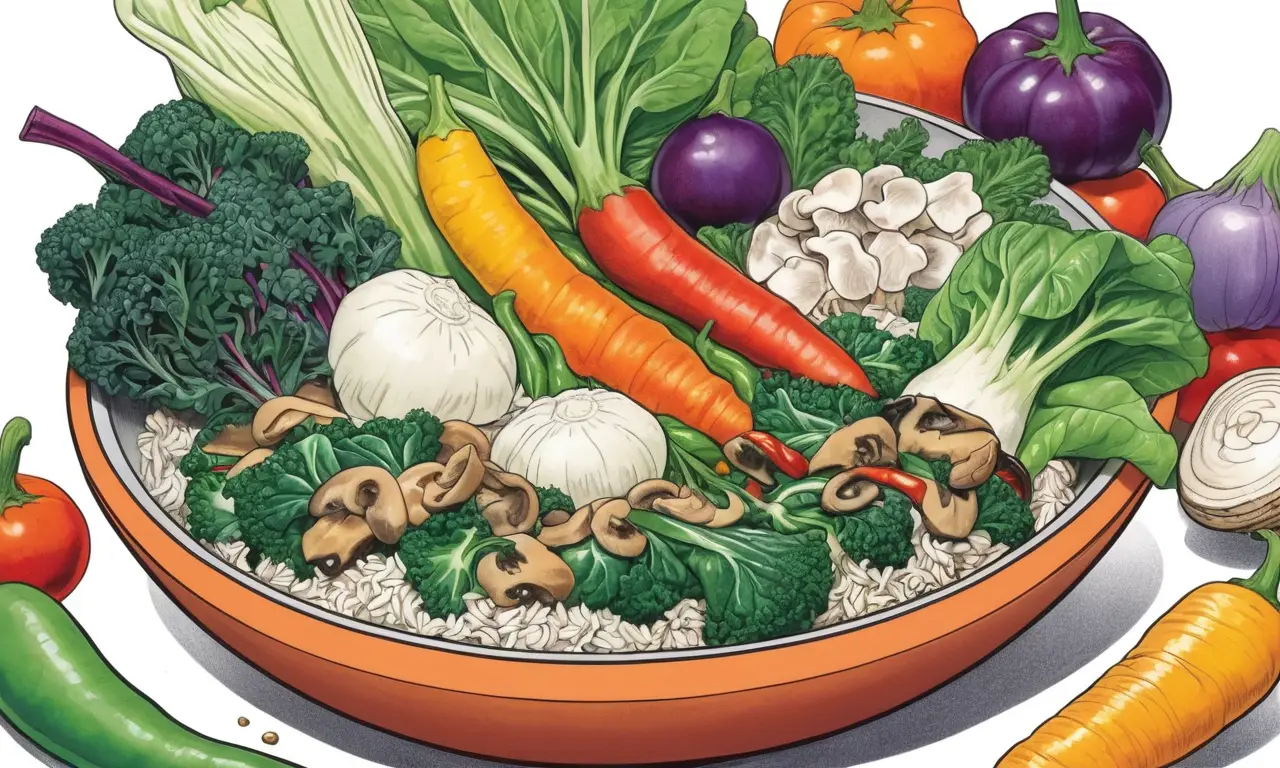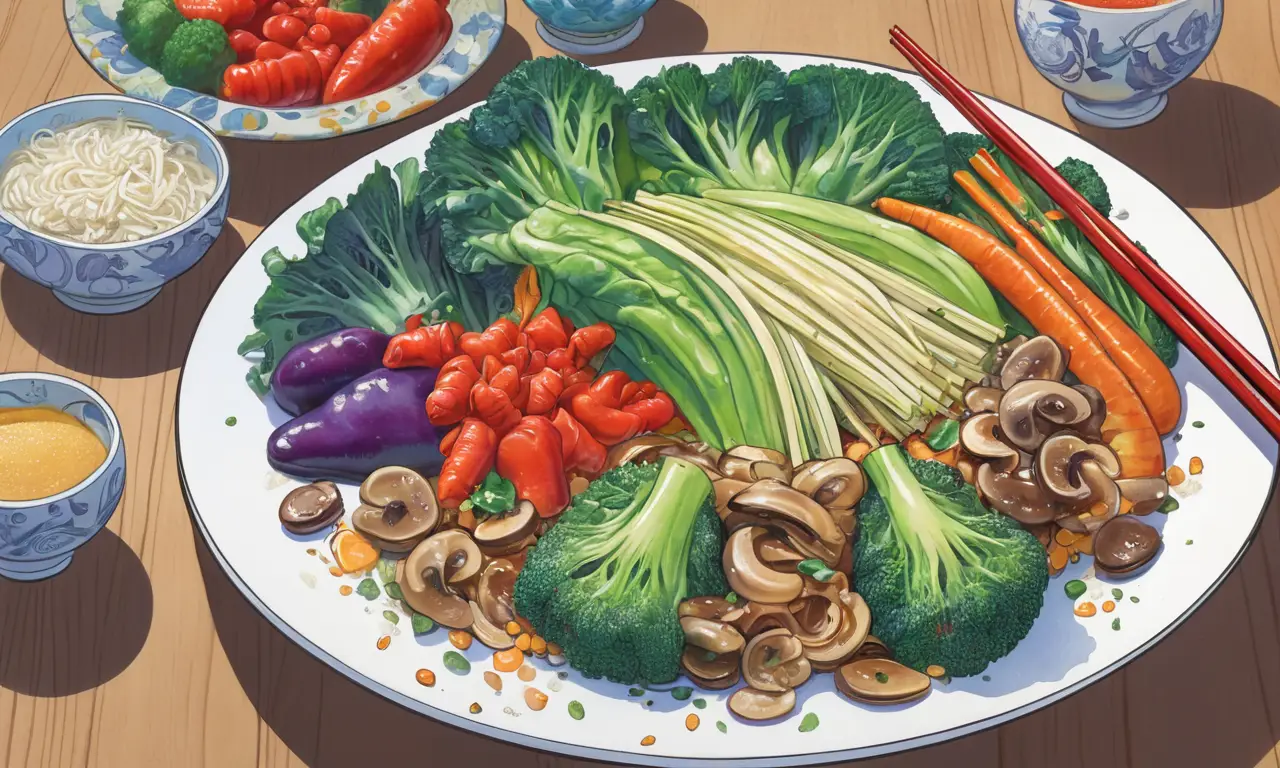
The world of vegetables offers a vibrant array of flavors and textures, catering to diverse palates and culinary preferences. When navigating grocery aisles or restaurant menus, you might encounter terms like “Chinese vegetables” and “mixed vegetables,” leaving you wondering about their distinct characteristics. This article delves into the nuances of these two vegetable categories, exploring their compositions, flavor profiles, nutritional values, and ultimately helping you make informed choices for your culinary adventures.
This comprehensive guide will first define “Chinese vegetables” and “mixed vegetables” individually, highlighting their unique ingredients and preparation methods. Subsequently, we’ll dissect the key differences between these two options, focusing on their composition, cultural contexts, and typical applications in dishes. We’ll also compare their flavor profiles and nutritional values, providing a holistic understanding of each category.
Chinese Vegetables Defined
“Chinese vegetables” refers to a specific selection of leafy greens and root vegetables commonly used in traditional Chinese cuisine. These vegetables are often characterized by their delicate flavors, vibrant colors, and versatility in stir-fries, soups, and dumplings. Some popular examples include bok choy, napa cabbage, gai lan (Chinese broccoli), water spinach, and bean sprouts.
These vegetables are typically prepared using simple cooking techniques that emphasize preserving their natural flavors and textures. Stir-frying with garlic, ginger, and soy sauce is a common method, creating savory and aromatic dishes. Steaming or blanching are also popular choices, ensuring the vegetables retain their freshness and nutritional value.
The use of Chinese vegetables in cuisine reflects the cultural emphasis on balance and harmony. Each vegetable contributes unique flavors and textures to create a symphony of tastes that nourish both body and soul.
Mixed Vegetables Explained

“Mixed vegetables” encompass a broader range of common vegetables, often combining different colors, shapes, and textures. This category typically includes carrots, peas, corn, broccoli, green beans, bell peppers, onions, and potatoes.
Mixed vegetable dishes are versatile and adaptable to various cooking methods. They can be steamed, roasted, sautéed, or added to soups and stews. The combination of different vegetables creates a visually appealing and flavorful medley that complements a wide range of main courses.
The popularity of mixed vegetables stems from their nutritional value and convenience. They offer a convenient way to incorporate a variety of essential vitamins, minerals, and fiber into your diet.
Key Differences Between the Two
While both “Chinese vegetables” and “mixed vegetables” contribute to healthy and flavorful meals, several key differences set them apart.
The most significant distinction lies in their composition. Chinese vegetables typically feature specific Asian greens like bok choy, napa cabbage, or gai lan, while mixed vegetables encompass a broader range of common vegetables from various culinary traditions.
Furthermore, the cultural contexts surrounding these two categories differ. “Chinese vegetables” are deeply rooted in traditional Chinese cuisine and often used in dishes that emphasize balance and harmony of flavors. “Mixed vegetables,” on the other hand, have a more universal appeal and are commonly found in cuisines worldwide.
Flavor Profiles of Each Option

The flavor profiles of what is the difference between chinese vegetable and mixed vegetable also diverge. Chinese vegetables tend to possess delicate, slightly sweet, and earthy flavors. The use of garlic, ginger, and soy sauce in traditional preparations adds savory notes and umami depth.
Mixed vegetables offer a wider spectrum of flavors, ranging from sweet (carrots, corn) to savory (broccoli, green beans) to peppery (bell peppers). The combination of different vegetables creates a more complex and diverse flavor profile that can be tailored to individual preferences.
Nutritional Value Comparison
Both “Chinese vegetables” and “mixed vegetables” are excellent sources of essential vitamins, minerals, and fiber.
Chinese vegetables like bok choy and gai lan are particularly rich in vitamin C, vitamin K, and folate. They also contain antioxidants that may help protect against chronic diseases. Mixed vegetables offer a broader range of nutrients, including potassium, magnesium, and vitamin A.
Conclusion
Ultimately, the choice between chinese vegetable vs mixed vegetable depends on your personal preferences, culinary goals, and desired flavor profile.
If you seek the distinct flavors and cultural authenticity of traditional Chinese cuisine, “Chinese vegetables” offer a compelling option. For a more versatile and adaptable choice that incorporates a wider range of common vegetables, “mixed vegetables” provide a satisfying and nutritious alternative. Regardless of your selection, both categories contribute to a healthy and flavorful diet.
